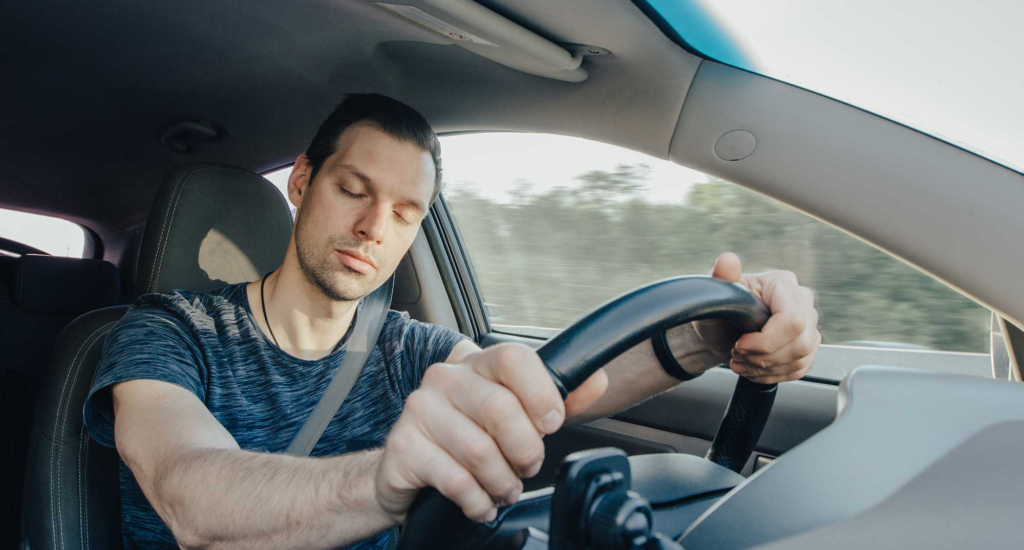
New research from the AAA Foundation for Traffic Safety is set to shift our understanding of drowsy driving’s danger. The study, soon to be published, uncovers a startling truth: the lethality of drowsy driving is far higher than previously thought.
Between 2017 and 2021, a staggering 18% of all traffic fatalities were attributed to drowsy driving, resulting in nearly 30,000 deaths. In 2021 alone, an estimated 6,725 lives were claimed by drowsy drivers. These numbers starkly contrast with official government statistics, shedding light on the underreported nature of drowsy driving accidents.
According to the AAA Foundation’s findings, drowsy driving is a factor in roughly 10 times as many traffic fatalities as traditional crash data suggests. This revelation underscores the urgent need for greater awareness and measures to combat drowsy driving on our roads.
Impact of Drowsiness on Driving
- Reduced Alertness: Drowsiness diminishes a driver’s ability to react swiftly to hazards. Even just one hour less than the recommended seven hours of sleep heightens the risk of a crash.
- Impaired Judgment: Sleep deprivation leads to poor decision-making on the road, increasing the likelihood of accidents. Drivers deprived of four or more hours of sleep exhibit impairment comparable to those driving over the legal blood alcohol concentration (BAC) limit.
- Self-Perception of Drowsiness: Previous studies have found that drivers often underestimate their level of drowsiness, endangering themselves and others on the road.
- Hazardous Microsleeps: Momentary lapses in consciousness, known as microsleeps, can occur, causing loss of vehicle control and failure to respond to road dangers.
Microsleeps and Traffic Accidents
A recent study published in Accident Analysis and Prevention highlights the alarming rise in traffic accidents involving large trucks in the United States, with a 47% increase reported by the National Safety Council. In 2021, these trucks accounted for nine percent of all vehicles involved in fatal crashes, underscoring the severity of the issue.
Drowsy driving has been identified as a significant factor in these accidents, with researchers pointing to the danger of “microsleeps” — brief, involuntary episodes of sleep lasting only a few seconds during wakefulness. These microsleeps can severely impact driving performance and elevate the risk of falling asleep at the wheel.
The National Police Agency of Japan has recognized the gravity of drowsy driving, categorizing it under “forward inattention,” akin to distractions, which have long been a leading cause of fatal traffic accidents in the country.
While research has delved into various aspects of microsleep behavior, including eye closure and changes in pupil diameter, there’s a lack of comprehensive analysis considering multiple factors such as driver’s eye and mouth movements, overall body behavior, and vehicle driving patterns. Additionally, most studies have relied on computer simulations rather than real-world collisions involving large trucks, highlighting the need for further research in this area.
Before Driving
The National Sleep Foundation recommends the following tips prior to traveling.
- Get enough sleep—most adults need 7 to 9 hours, and most teens need 8.5 to 9.5 hours, to maintain proper alertness during the day.
- Schedule proper breaks, about every 100 miles or 2 hours during long trips.
- Arrange for a travel companion—someone to talk with and share the driving.
- Avoid alcohol and sedating medications—check your labels or ask your doctor.
- Don’t stare straight ahead. Move your eyes around and focus on things near and far.
The Alaska Sleep Clinic specializes in diagnosing and treating a wide variety of sleep-related disorders. Our registered polysomnographic technologists (RPSGT’s) work night schedules and realize the importance of successful sleep routines for job performance.










